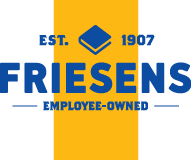September 18, 2020
Theme: A Guide to Covering the Basics

During the early stages of yearbook creation, the subject of a theme may arise, along with the inevitable question: should a theme be used this year? What are the requirements, benefits and journey involved? Before you start down that long and winding road, there are several factors to consider.
Just as you are defined by your unique personality, qualities, and characteristics, using a theme in a yearbook helps define its distinct personality, setting it apart from the crowd. A well-developed yearbook theme captures the uniqueness of the school year while highlighting memorable experiences from the perspectives of the students by using visual and verbal statements throughout. It should follow a consistent pattern and set the stage for the story inside.
Consider using a certain style to unify the yearbook from beginning to end. For example, comic book, newspaper or magazine style, a journey through time, or social media might be more obvious theme choices. There are also more subtle themes that can be woven expertly within the pages such as using a particular background color, clean lines, and graphics. Regardless of the theme selected, it’s important to consider a few fundamental rules:
What should your Theme do?
- Define the main idea and mood using words, graphics, and repeating patterns
- Tie all sections of the book together, creating a consistent, homogeneous flow from cover to cover
- Tell a specific story – your theme tells the story of your year (is it one of triumph? Or collaboration?)
Where is the theme best represented?
- Cover – as your introduction to the book, your cover should be the centerpiece of your theme. You can include the theme in words on the cover, or simply incorporate the motifs that will be used throughout the book.
- Endsheets – similar to the cover, but less vibrant, and typically wordless
- Title Page/Table of Contents – it’s especially good to include your interior pieces here, such as folio, fonts, and graphics
- Divider Pages – these should be consistent (think the same design but a different colour, or vice versa)
How does the theme appear?
- Font and Text – choose no more than 5 fonts, and use text consistently (all primary headers should have the same font and size, all body copy should match, etc.)
- Page Layout & Design – these don’t need to be identical, but should coordinate. Don’t have only one spread that uses circular photos, when the rest are square or rectangular.
- Folios – Page numbers should be identical in location, colour, and design whenever possible
- Word Choice – See if you can have all your primary headlines relate back to the theme.
So now that you know how to implement your theme, where do you find inspiration in choosing one? There are a lot of places you can find great theme ideas, but we recommend starting with your team:
- Shout it out – have a brainstorming session where everyone just shouts what ideas they have (no idea is a bad idea)
- Write out ideas, and see where they grow
- Use word bubbles or a tree mode and plan out how you can take your theme and apply it to every section of the book.
- Look at previous books. Are you following a theme trail? Has a theme been used more than once recently?
There are times when a theme can develop naturally, but oftentimes it may take several brainstorming sessions to lay the foundation and build a detailed framework. Throwing out ideas and discussing potential suggestions takes time and the challenges may increase as you plan each page, but the result will be worth the time and effort. You can also find theme ideas in the wild. We recommend keeping an eye out for the following:
- Professional print design (traditional magazine, novels, posters, etc.),
- Pop culture (is there a TV show that’s sweeping your school? A new album? What are the year’s biggest movies?)
- Graphic Design – see what’s trending in the design world.
- Social Media & the wider internet – look at Instagram, or google to see what other schools have done.
Whatever decision you make regarding a theme, remember these key factors: consistency, brainstorming, personalizing, organization, and growth. You are the storytellers representing your school and showcasing your unique personality and this memorable time in your life. Make it unforgettable.







